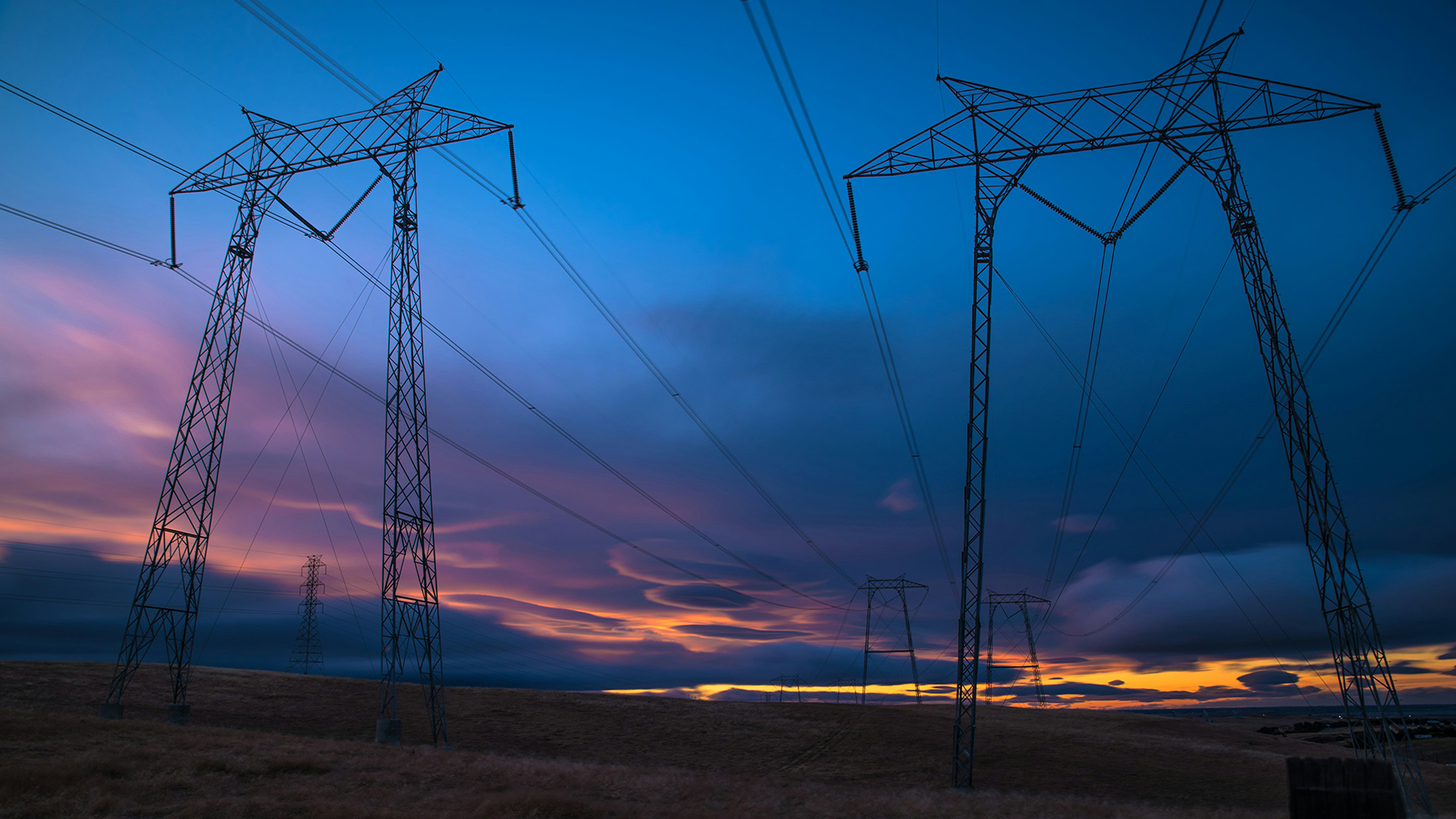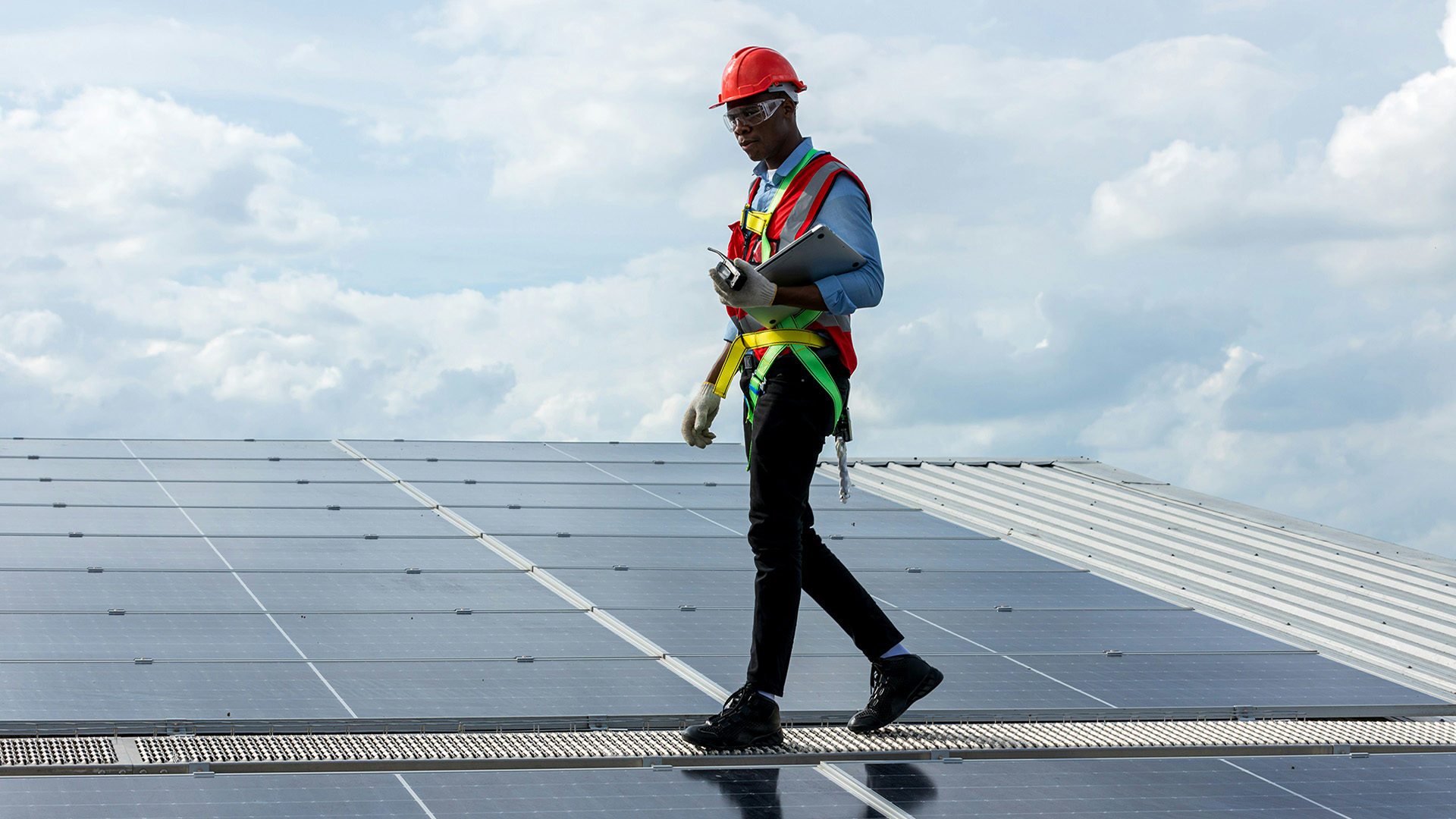1. Scale up renewable and clean power generation
Renewables and nuclear power plants are currently producing 40% of the total electricity generated in the United States No matter how much we mind our consumption, we’re not going to get rid of 60% of our demand, so the share of energy coming from clean power will need to scale up dramatically in the years to come.
2. Improve the capacity of transmission & distribution systems
We move electricity from where it’s generated – sunny places for solar panels, windy places for wind power, and by a body of water for nuclear and hydropower plants – to where it’s being consumed with wires and electrical equipment. Big amounts of electrical energy move long distances through the high-voltage transmission system, and smaller amounts move locally through the lower-voltage distribution system. When these systems have greater capacity – in the form of new lines, upgraded equipment and monitoring capabilities, and streamlined legal processes for connecting new clean energy sources – utilities and grid operators have more options for taking advantage of clean power production.
3. Limit peak loads
Since power demand fluctuates throughout the day and year, grid operators and energy researchers often think about the highest power demand the system needs to be able to meet – its peak load. For grid planning purposes, increasing that peak load means adding more power capacity. Unfortunately, since there’s no guarantee that the peak load will happen when clean power generation is at a maximum – for instance, an evening peak in electricity demands happening just as solar PV output is winding down – that often means adding fossil-fuel-fired power plants that can ramp up their power production quickly to meet a spike in the grid’s demand. Buildings and industry facilities can avoid asking for more power when the grid is experiencing peak demand by conserving energy and strategically scheduling electricity use to avoid grid peaks.
4. Make buildings flexible and responsive
Each building also has its own peak load, and many larger buildings are charged additional fees each month based on their highest power draw from the grid. Buildings constructed and operated for energy efficiency help the grid by asking for less electricity to provide the same level of services and by having smaller peaks in their electricity consumption. However, buildings with “smart” technology and communications capabilities can actively help the grid, too. Such buildings can switch off devices to avoid asking for more power when the local grid is experiencing peak demand, shift the timing of their electrical consumption to maximize the use of clean energy, and some can even respond to grid conditions within a second to help keep everything balanced for safety and reliability.
5. Design markets to incentivize clean power
The economic structures that govern buying and selling electricity differ depending on where you are in the North American grid system. Ideally, the cheapest electricity for buyers and the most profitable for producers would be clean energy sources. However, these markets were not originally designed to reward participants for avoiding pollution. In fact, adding climate-friendly energy storage in the form of batteries would actually increase emissions in some places because of how the economic incentives are set up. It’s time for different incentives that encourage a healthy, clean-powered future.
6. Deploy energy storage technology
Although we must do much more to distribute clean electricity throughout North America, use electricity efficiently, and shift the timing of electricity consumption, there will still be instances when the supply of clean energy exceeds the demand, and vice versa. Battery storage system costs are declining worldwide, today averaging only 10% of what the same battery would have cost in 2010. Meanwhile, the amount of time they can “hold on” to that electrical energy (or most of it, anyway) is increasing each year. Energy storage must prioritize storing electricity generated from clean sources and delivering it when it will reduce or replace energy generated by polluting fossil fuels – any credible plans or roadmaps for future-proofing the grid call for growing our energy storage options.
Fortunately, progress in each of these six areas is already underway. There are smart, dedicated people delivering new technologies, models, and policy proposals every day that bring us closer to a safer and more reliable grid powered by clean energy.
At the same time, we know challenges will continue to mount as the percentage of power coming from renewables grows higher and higher. We’ll need entirely new engineering designs for power electronics, analytical models to predict power needs and assist planning, control and coordination software to distribute electricity reliably, and market structures and strategies that incentivize clean power.
But this is also good news. These are wonderful challenges to give to this generation of scientists and engineers. Most of us, myself included, would rather work on these worthwhile problems than reinforce the status quo. Creating a 100% clean power sector built on the grid of the future is our moonshot for this decade. Let’s mobilize and make it happen.
Amanda D. Smith, PhD, is a senior scientist at Project Drawdown with expertise in building science and distributed energy systems.
This work was published under a Creative Commons CC BY-NC-ND 4.0 license. You are welcome to republish it following the license terms.






